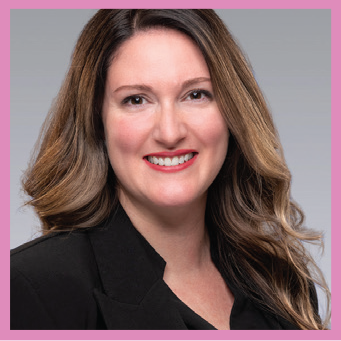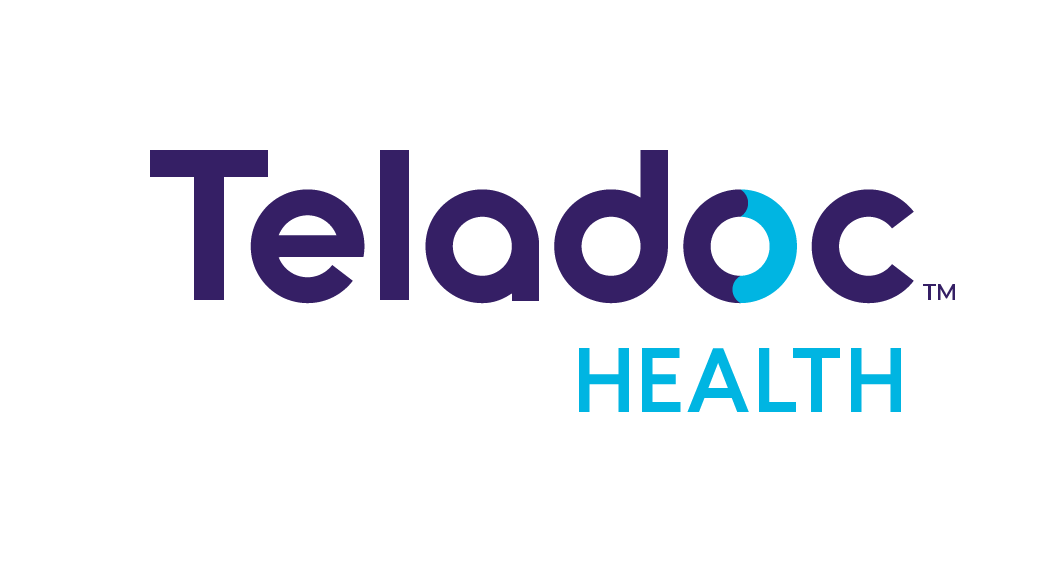PARTNER CONTENT

While women’s health issues are becoming a larger part of the employee benefits conversation, topics like menstruation and menopause still aren’t receiving enough attention in the workplace. While an historic lack of research on women’s health has led to men’s health taking precedence, employers are increasingly showing support for female employees and their unique health journeys.
Benefits Canada asked eight expert panellists to discuss the ways in which they’re prioritizing women’s health through their benefits plans and leave policies, as well as advice for employers to ensure they’re giving women’s health the attention it deserves.
Participants








Q: How are interest rates and higher inflation in the United States and other developed countries impacting emerging markets?
KAROLINA: The World Health Organization believes [that] being a man or woman has a significant impact on health due to both biological and gender-related differences. In many societies, females are disadvantaged or discriminated against based on social/cultural factors, so it’s key to have a focus on women’s health. On a national perspective, we haven’t had enough focus on women’s health historically, so, logically, benefits have also lagged ... Research has been predominantly focused on male subjects and male-specific issues. In my educational lifetime, it started out predominately male-focused, but I’ve witnessed a bit of a shift. Thankfully, these trends are changing, especially over the last few years and, because of the focus from the WHO, research is evolving. At Teladoc, we did our own research because we felt it was key to understand women in the workplace and in the Canadian health-care system and how to support them better. We found there’s a growing awareness of the need for gender-specific medical research and health care and a balanced approach in workplace health programs and benefits plans for women.
LITSA: [It was] only in the 1990s that Canada provided guidelines to include women in clinical trials. The research component is a huge focus, because when you look at cardiovascular disease, the No. 1 cause of premature death in women is heart disease and stroke ... Women could be attending the [emergency room] due to one of these illnesses, but they might not be diagnosed quickly or their symptoms might be dismissed. The research part is a large reason for the perception that we’re focusing more on men’s conditions, but I don’t know that that’s still the case.
DIANA: The challenge I see now is that women’s health has become politicized. We can say we’re going to do all the right things, but if the decision-makers are impediments to us moving forward, our programs and policies will be challenged. Looking at the workplace specifically, we look at men’s and women’s health issues differently at our organization and try to tailor communications accordingly. The reality is, even men in the workplace care about women’s health issues because they have spouses and daughters. Moreso, we need to be careful that we don’t alienate people in the way in which we communicate.
SHAWNA: I agree that research is important, but I also think there’s the conversation around education — how we’re educating our children, our health professionals, our educators and where women fall in that conversation as well. We [also] need to consider how to be inclusive of anyone who identifies as female. The diversity lenses that need to be brought to the conversation are significant and it can become difficult in a workplace. In the menopause
conversation, it can be very exclusive as a white woman’s conversation and a middle/upper class white woman conversation. As we move forward, we need to make sure we’re inclusive when we’re talking about women’s health — not only that we have men involved, but that all types of women feel welcomed into the conversation.
Q: Recognizing that the topics of menstrual and menopausal symptoms are growing in the workplace, does your organization have, or plan to implement, initiatives to better support women in these areas? How can employers adapt their work environment to incorporate menopausal support?
SHAWNA: [An important component] in workplaces is having champions that are willing to support ... other employees and build resources. [Dalhousie hosted] a lecture around menopause roughly three years ago — they thought they’d get about 20 people, but they had over 200. This was an eye-opener to the lack of knowledge around menopause and [how it affects] women’s professional lives. From that [point], we developed a monthly resource or support group that [has] over 150 members. They choose the topics to discuss — sometimes it’s an open forum where we have discussions and sometimes we bring in guest speakers. Another big piece that we’ve been doing a lot of work around is training managers to support menopausal or perimenopausal employees. All [of] the aspects we need to think about from a menopause perspective are finally happening and starting to influence some change. Having knowledge is power and having a space to feel like you’re part of a community is so important.
LISA: At PwC, we’re framing our menopause strategy around a longer journey [supporting] women’s health. We started a few years ago by looking at our parenting strategy and how we’re supporting women by increasing fertility and surrogacy benefits, caregiver benefits, parental leave benefits and now looking at it as the full reproductive cycle. We’re moving onto menopause and, as mentioned before, it’s important that we’re not being exclusive. I’m conscious whenever I’m talking about women in a corporate environment — sometimes you have to tread carefully with your language [and] be clear that we’re talking about all people who menstruate, or all people with a uterus, not just women ... Also, [it’s important to bring] men into the conversation because they’re an important part of the solution as well. Whether they’re our colleagues or managers, it matters how they’re received. We launched our menopause strategy in April [by signing the Menopause Foundation of Canada’s] ‘Menopause Works Here’ [pledge] with commitment at our most senior leadership level. We built a website with all sorts of resources and guidance and we also launched monthly sharing circles which are [led by] volunteers, where people can come together and just have space to talk.
KIM: We’re beginning to implement [these initiatives] into our overall well-being strategy. We’ve released a couple of guides around menopause globally — one for [employees] and one for managers. Another thing we’ve done at EY is hosting monthly well-being webcasts and we did one specifically on menopause. Ahead of [these webinars], we always tell people to submit questions, but we never get any. With this one, we had 25 to 30 questions before the session and saw really high participation. What I was surprised about was that around 20 per cent of the attendees were male and 25 per cent of people were [younger than age] 40.
AMY L: We spend a lot of time within the human resources space thinking about the internal factors ... and just listening to what our employees are telling us and leveraging our employee resource groups. We want to understand [how we can use our] corporate culture to start having more progressive conversations. We also look at it from an intersectional standpoint, which means when we’re talking about benefits [and how] they relate to women and having that inclusive conversation about women’s health. I do think the younger generation [has more] awareness and [is comfortable with] these conversations. Understanding how to have [these conversations] in an organizational context is the piece we’re all still trying to figure out.
Q: Have you begun to assess whether the list of drugs covered by your plan promotes equity and inclusivity, particularly for drugs that improve women’s quality of life?
KIM: While we don’t specifically go through the list of every drug that’s covered under our plan, our guidance is consistent with what’s covered by Health Canada. We typically cover [drugs] but it has to be for [the purpose that] it’s diagnosed for. For example, Health Canada has approved [Ozempic] for diabetes but not for weight loss ... so that’s our general approach. I do know from personal experience that we also cover drugs related to hormone replacement therapy for menopause and birth control.
LITSA: As an employer, there’s the drug coverage, but there’s also all the other benefits. It’s important to [continuously] assess [benefits] offerings and make sure you have comprehensive coverage for various employees. As a women’s health company, it’s important for us that we provide good coverage for women. We’ve made a conscious decision to offer all Organon products free, so they’re covered at 100 per cent under our plan. In addition, we cover non-Organon products to a certain percentage. You’re trying to attract and retain people from diverse backgrounds, so you should be monitoring [your benefits offerings] on a regular basis.
RANA: We always want to make sure our plan is inclusive. For example, fertility drugs, surrogacy and adoption costs are all covered under our group plan. We also looked at our policies and how we can evolve them to better support our employees, [such as] through enhancing our parental leave to match our pregnancy leave, ensuring that all types of families have the same experience when welcoming a new baby into their lives. We’re also continuously reviewing the language within our policies to ensure it reflects our ambitions for diversity, equity and inclusion.
Q: In recent years, we’ve seen a significant increase in coverage of fertility benefits, but many plans only cover a small portion of required treatments. Do you feel your organization provides sufficient fertility coverage or is this something you’re looking to improve?
DIANA: The wait time in Ontario for IVF treatments is over two years. Furthermore, there are dollar caps for coverage in the province, which puts women in the position of possibly timing out [for treatments]. To me, this is horrific because women are often starting their families later due to focusing on their careers first and we want them to be able to do both. We recently made the decision to forego the requirement of provincial coverage first, providing access to treatment earlier. I know it’s hard for organizations to keep up with these changes, but if we find out something is lacking, we do [our best to adapt].
KIM: Some people might not think they need fertility benefits until they can’t get pregnant. For years, we only offered fertility drug coverage under our plan, but last year, along with the rebranding of our family leave, we started covering fertility treatment as well as the drugs. We’ve had a great response and high utilization. It essentially covers one round of the fertility treatment, because there are cost restraints. But through implementing this coverage, we’re trying to remove barriers. We also offer surrogacy and adoption benefits because everybody’s journey is different.
LISA: One of the things [that] we’ve been successful at is working closely with our insurers and [volunteering] for [pilot programs]. There can be huge benefits if you’re willing to be a guinea pig, to work with your insurer as they’re developing new programs or plans. We did that with surrogacy coverage ... but the benefit shifted over time, so what we launched versus what it looks like today is different because of all the learnings. As a benefits leader, I was working with people accessing the benefit [and] I really understood what the employee experience was. I was able to go back to the insurers and tell them [what works and what doesn’t.]

While research is important, there’s also the conversation around education
Q: Do you believe the prevalence of mental-health disorders such as depression are higher among women than men? How can employers support women who are contending with mental-health issues?
KAROLINA: Statistically, women are twice as likely to be diagnosed with depression and anxiety disorders as men. One of the things that stuck with me from medical school is the definition of hysteria. It comes from Greek [and] means ‘a wandering uterus.’ As a person who identifies as female, the idea that someone’s abnormal behaviour would be due to the fact that they’re female is offensive. I think this is a key piece to connect to the destigmatization of experiencing mental-health issues as a woman. Women, as well as gender-diverse people, report that their symptoms are more likely to be dismissed or misdiagnosed. To address this subject at Teladoc, we surveyed [more than] 1,600 Canadians and key highlights from our mental-health study found an alarming 78 per cent of those who accessed mental-health support described the process of navigating the system as somewhat or very difficult. Accessing help for mental-health issues has to be easy.
RANA: It’s crucial to break the stigma within organizations when it comes to mental health and allow women to feel like they can have open conversations. At Roche, we have internal programs that are meant to help break the stigma and create psychological safety for employees to have meaningful conversations on the subject. We [do our best to] equip them with useful resources so they can be their best selves and thrive in the organization. It is a journey, as it takes a long time to truly break the stigma, but [it’s definitely a priority for us].
LISA: I wanted to mention the intersection of neurodiversity — things like autism and ADHD — and how menopause can impact [this]. I think we’re seeing more and more women identifying as neurodiverse, [so we need to consider] the intersection between that and mental health as well. In the past, [neurodiversity wasn’t properly] recognized [and] it likely led to increases in depression and anxiety, which could have been avoided had we known how to recognize these types of brain differences.
Q: Women make up the majority of caregivers in Canada, a burden that adds to their professional and family responsibilities. Do you have any initiatives in place to support caregivers within your organization?
RANA: Women are twice as likely as men to take time off to provide care and that can have a huge impact on their financial health. From an organizational perspective, we try to support caregivers in [a few different ways]. [This can involve] paid time off when they need to look after a sick family member or provide end-of-life care. Another way is allowing them to continue to contribute to their savings plan and receive the employer match while they’re on leave, so their savings aren’t penalized. The final way is through financial literacy. We’re focused on providing women with support in that area so they feel more confident and can plan ahead.
SHAWNA: At Dalhousie, we also have a support group for caregivers that was divided into those who are caregivers for children and those looking after older adults. Whenever I can, I bring the subject up in conversation and I’m surprised by the lack of awareness that many managers have. It goes back to the conversation around a real need for training.
KAROLINA: One of the things we’re looking at is the idea of flexibility and being able to pivot as things change. We’re not in a static workplace and as we understand more, we need to be flexible to meet changing needs. Teladoc offers generous time off and we have flex time specifically for caregiving because most of our employees are women and we recognize how much of our time is taken off for this critical need. One of the other things I’m super proud about is that most of our leaders at Teladoc Health Canada are female. We lead by example to show others that time with family is important.
DIANA: Of course, women don’t have to [be the caregiver] if we remove the stigma around men doing it. If you encourage men to share in the family responsibilities, whether it’s child[care] or elder care, the balance changes. Our policies and our actions have to say that it’s OK. We offer paid emergency family care leave and it’s open to both men and women. Our parental leave is for men and women, but the men are nervous about taking it because they think it’s a hindrance to their career — they’ve seen what it has done to their mothers. If we can change that stigma of men [being caregivers], then we help women, too. My hope is that these programs, along with a hybrid work environment, creates positive change for the future.
Women's Health Roundtable Sponsors

Organon
Organon is a global health-care company formed to focus on improving the health of women throughout their lives. Organon offers more than 60 medicines and products in women’s health in addition to a growing biosimilars business and a large franchise of established medicines across a range of therapeutic areas. Organon’s existing products produce strong cash flows that support investments in innovation and future growth opportunities in women’s health and biosimilars. Organon has a global footprint with significant scale and geographic reach, world-class commercial capabilities, and approximately 10,000 employees with headquarters located in Jersey City, New Jersey.

Teladoc Health Canada
Teladoc Health Canada’s mission is to empower all Canadians to live their healthiest lives. Teladoc Health Canada delivers virtual care by using proprietary technology to connect Canadians to health care providers across the country, whether it is from the comfort of their own homes or at the hospital. At home, our services are accessible via personal smart devices, laptops and also by phone. In hospitals, Teladoc uses remote technology devices to support on-ground health-care professionals by allowing patients to see and speak with virtual doctors. These devices also enable on-ground medical staff to upload medical images and connect to peripheral devices. Teladoc Health Canada has more than 20 years of experience delivering virtual care to Canadians through employers, and insurers and we’re integrated in health-care systems.



